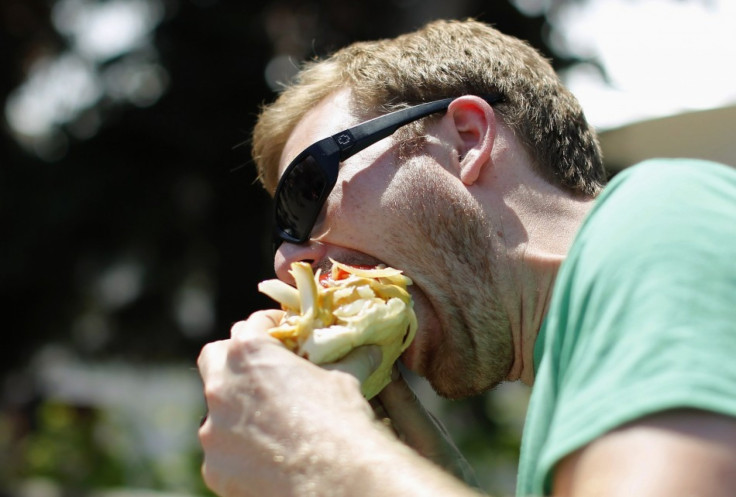Summer BBQs More Expensive In Spite Of Stable Cost Of Living

Even if those hot dogs and hamburgers you grilled prior to enjoying the July 4 fireworks show didn't leave a bad taste in your mouth, they burned a hole in your pocket. Or at least they burned a bigger hole than the dogs and burgers you might have grilled on Memorial Day.
That's because the price of hamburgers, hot dogs and other commonly grilled items shot up dramatically in June, government data released Tuesday showed, far outpacing price increases seen for other food items and the general cost of living, which actually dipped slightly in the month.
An analysis by the International Business Times of Labor Department data shows the average price consumers paid for a basket of goods needed to serve eight quarter-pound hamburgers and a side of potato chips would have been $18.98 in June, 16 cents more than the same shopping list would have cost a month before and about 64 cents more than it would have cost a year ago. And that's not even counting fixings like pickles, mayo or ketchup!
| Item | June 2011 Cost | May 2012 Cost | June 2012 Cost |
| Two or three large tomatoes (half a pound) | $0.78 | $0.67 | $0.75 |
| One medium iceberg lettuce (1 pound) | $0.97 | $0.83 | $0.90 |
| 8-count hamburger roll pack | $1.19 | $1.13 | $1.12 |
| Two pounds of ground chuck | $6.42 | $6.76 | $6.90 |
| One pack of American processed cheese (24 slices) | $3.92 | $4.22 | $4.03 |
| One 16-ounce pack of potato chips | $5.04 | $5.20 | $5.26 |
| Total | $18.32 | $18.80 | $18.96 |
That hike in prices, of 0.9 percent month-over-month and 3.5 percent year-over-year, is substantially higher than the general non-seasonally adjusted cost of living, which the government says dropped by 0.1 percent in June, when compared to May, and was 1.7 percent higher than 12 months ago. The price inflation for the hamburger cookout basket was also higher than that observed for all grocery store food items and all food bought at restaurants, which shot up 0.1 percent and 0.2 percent in June, respectively, when compared to May. The price for groceries and restaurant meals rose by 2.7 percent and 2.9 percent, respectively, compared to a year ago.
The main culprit behind pricier barbecues: the skyrocketing costs of meat, which recently caused food price indices to rise, even as the cost of grains and dairy items have declined. Ground beef prices, for example, are 7.3 percent higher than a year ago, a puzzling phenomenon in a market where commodity cattle prices are close to yearly lows. Prices for fruits and vegetables have also risen over the past year, although less than average food prices.
Consumers would not have gotten a respite from the sticker shock by switching their grilling options, either. According to the U.S. government, the price of round-cut steak has risen by 15 percent over the past year. Frankfurters have seen a 5.6 percent price spike from June 2011.
Interestingly, the rising cost of U.S. meat purchases is not reflective of a global pattern. In the United Kingdom, for example, where headline annualized inflation was higher than that observed on this side of the Atlantic, consumers paid 0.5 percent less for meat, on average, than they had a month ago.
The biggest contribution [to the drop in food prices] came from meat, where there have been reports of the recent weather hampering demand, the British Office of National Statistics said in its own release of monthly inflation indices Tuesday.
Unfortunately for cookout aficionados, prices are only likely to continue rising.
Dire crop conditions as a result of the drought have boosted grain prices in recent weeks, which in turn should lift consumer food prices in the second half of the year, Sam Bullard, a senior economist with Wells Fargo Securities, wrote after the government data release Tuesday.
Talk about getting burned.
© Copyright IBTimes 2024. All rights reserved.




















